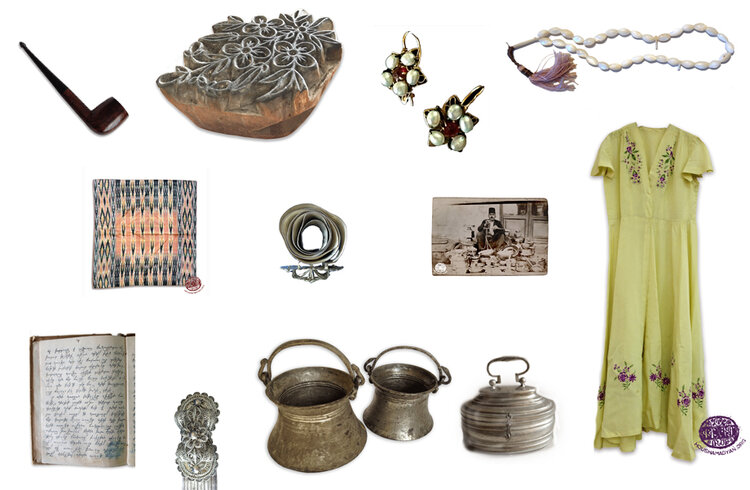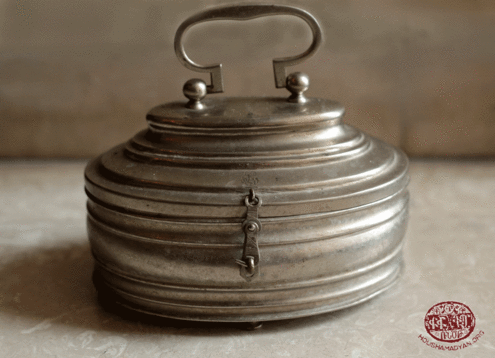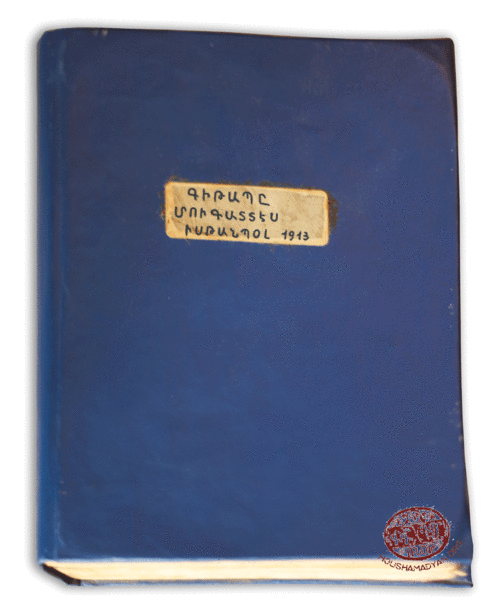Baghdasarian-Melkissetian collection - Lebanon
All the items in the Baghdasarian-Melkissetian collection belonged to Lena Baghdasarian-Melkissetian’s grandmother, Lioni Nalbantian (born Patanian) as part of her dowry. She was married in Ayntab to Simon Nalbantian who was a farrier. They immigrated from Ayntab to Aleppo in the beginning of the 20th century (before the Genocide) and later, in 1972, they moved to Lebanon.
The collection is currently in the possession of Lena Baghdasarian-Melkissetian in Lebanon.
The collection includes:
- A black robe from Ayntab emboidered in the Urfa-style.
- A red nightgown from Ayntab.
- Golden thread embroidered pillowcase from Ayntab.
- A bath set, including a water bowl, a bucket and a soap dish. These are the works of Avedis Kalemkerian, who was a famous silversmith in Ayntab. The items carry the silversmith’s initials.






The collection also includes a bible (Armenian written in Turkish letters) published in 1913, which belonged to Khatchadour Hovagimian. Khatchadour was Lena Baghdasarian-Melkissetian’s mother-in-law’s father, who was born in Ayntab. The Hovagimian family also immigrated to Aleppo and later passed to Lebanon in the 1960’s.











